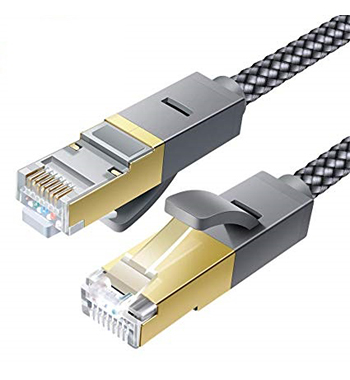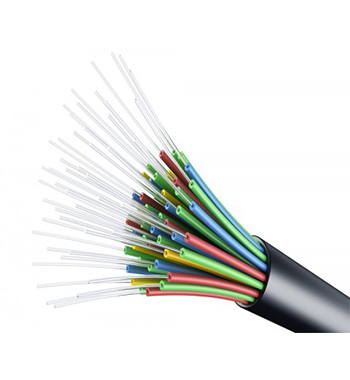CABLES & MEDIA CONVERTERS
Cables are the medium to transmit data and power for the network devices. To interconnect the network devices over LAN/WAN we need different types of cable with different features including Coaxial Cable, Twisted pair, fiber optic depending upon the physical layer topology as well as the size of networks. The installation method used for this called structure cabling to made networks stable maintained and well performed. Chase trading and technology deals in a variety of structure cabling cables using for security surveillance, large and small network, security alarm and fire alarm system. We are providing solutions in Coaxial, Twisted pair. Fiber optic, patch cord cables in well-known brands including RIBBON, Clipsal, Nexans with some newly quality brands Dcom, ADP, Lulink, Hotlight transfer.
Coaxial Cable: Coaxial cable, is a hard wire cable used for structured cabling installation in private and industrial sector.
Inside the coaxial cable, there is solid copper surrounded by a plastic cover. A thin metal shield surrounds the insulator, with another insulating and guard layer around the shield. It will make the wire flexible and helpful to pull the cable over selective points. Coaxial cable can transmit the digital signals for internet connection, Security surveillance cameras, and other latest technologies.
CAT SERIES CABLE: CAT5e, CAT 6, CAT 6e, CAT7, CAT 7e, CAT 8 are CAT series Ethernet Network cables used in large and small networks structure cabling installation. Each category has its own capabilities regarding length, Bandwidth, and size of the network. The consumer selects the cable by considering the size and structure of its network size. Most commonly Ethernet cables are Cat5e Ethernet Cable Transmission Speed is between 10-100Mbps and the maximum Bandwidth It can handle is 100Mhz. Category 6a and Category 7 both have same Transmission speed which is 10,000Mhz but their Bandwidth is different, Cat6a has 500Mhz and Cat7 has 600Mhz.In structure cabling standards if you need patch cords up to 25 feet, use CAT-5e stranded cable for ease of flexibility.
If you are making linger runs or going through walls or ceilings, I’d go ahead and use the CAT-6 UTP (solid) cables-if that seems a bit expensive, then go with the CAT-5e UTP.
Fiber optic: Fiber optic cables are used for long distance interconnectivity between network devices. Data transmission of these cables is very fast and reliable. But the most common question before using optical fiber cables are, what kind of cable you need either single mode or multimode. What is the distance range, and is there future network convergence availability? For this, you need to know about types of fiber optic cables which are single mode and multimode. An optical fiber cable is made of a core (inner layer), cladding (the layer around the core), and jacket (coating around the cladding).
Single-mode fiber cable having a core size of 8.3 to 10 microns (in diameter) and a cladding size of 125 microns. Single-mode cables are normally used in long-distance network connectivity scenarios with the optical transmission. OS1 and OS2 are the standard types of single-mode fiber cables. These fiber cables are the ability to perform between 1310 nm and 1550 nm, but the OS2 types of cables have a better transmission performance especially over longer distances.
Multi-mode fiber has a feature of typical core size of either 50 microns or 62.5 microns with a size of 125 microns. Shorter cables distances, especially in data centers, are common uses for multi-mode cables. Multimode cables are further classified Optical and are known as OM1, OM2, OM3, OM4, and OM5.Each type has its own transmission power and features.
Converters or multiplexers are used to converge the Ethernet network technology into other newly latest technology through media convergence. Chase trading providing convergence solution with a variety of well-known branded multiplexers and converters.



